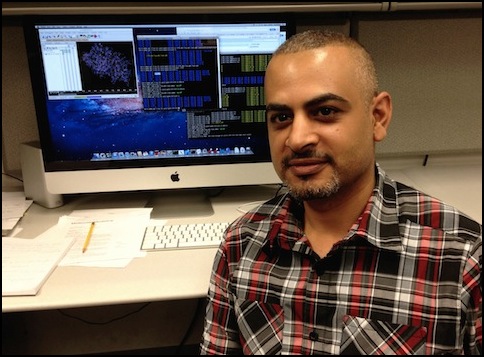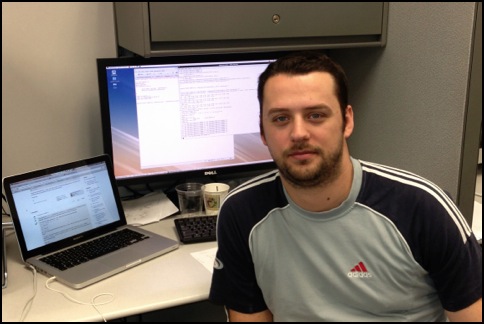Below you will find a subjective list of the top journals that I recommend you monitor, and of course aim to contribute to.
I suggest you subscribe to PubMed feed(s) from at least the vital journals in each topic area along with specific keywords relevant to your research. This should provide you with weekly updates that you can peruse for papers of interest.
If you are just starting out you can begin with monitoring the listed vital Science General journals (i.e., Science/Nature/Cell/PLoS Biology/PNAS, plus PLoS Computational Biology/Biophys J and Bioinformatics). If you see that you can handle the inflow of updates (and usefully read some papers) for about 2 months - then gradually increase the number of journals/keywords you follow until you have a good covering of the journals listed below.
Also consider setting up citation alerts for new papers that cite a particular key article you are interested in. There are a number of ways to do this. One is to find the paper in the ISI Web of Knowledge, and then create a ‘Citation alert’, which can be directed to your RSS.
Roughly one half of your time should be spent reading. Half of your reading should be immediately related to your current research; the other half should be potentially related to your current or future research. You should learn how to read journals to extract the most useful information in the least time.
Topic Areas:
Vital
- Biochemistry
- Biophys. Journal
- Curr.Opin.Str.Biol.
- Nature Str.Biol.
- Structure
- J.Mol.Biol.
- PLoS journals, esp. PLoS Biology and PLoS Comp. Biol.
- Protein Science
- Proteins: Struct., Funct., & Bioinfo.
- Ann.Rev.Biophys. & …
- Ann.Rev.Biochem.
Good
- Bioinformatics
- J.Biol.Chem.
- BMC Biophysics
- Biopolymers
- Protein Eng.
- Quart. Rev. Biophys.
- Adv. Protein Chem.
- Trends in Biochem.Sci.
- Biophysical Chemistry
- Curr. Opin. Chem. Biol.
- Critical Revs.Biochem.Mol.Biol.
- Eur. Biophys. J.
- EMBO Journal
- EMBO Reports
- J.Struct.Biol.
- Physical Biology
- Progress in Biophysics and Molecular Biology
- Systems Biology
Worth Considering
- BMC Bioinformatics
- Comp. Biol. & Chem.
- Chem. & Biol.
- Methods in Enzymol.
- Nucleic Acid Research
- Adv.Enzymol.
GENERAL CHEMISTRY
Vital
- J.Amer.Chem.Soc.
- Acc.Chem.Res.
- Angewandte Chemie
- Chem.Rev.
Good
- Chem.Rev.
- Chem.Soc.Rev.
- Chem.Eng.News
- Adv.Phys.Org.Chem.
Worth Considering
CHEMICAL PHYSICS
Vital
- J.Chem.Phys.
- Chem.Phys.Lett.
- J.Phys.Chem. B
- Ann.Rev.Phys.Chem.
- J.Comp.Chem.
- J. Chem. Theory and Computation
Good
- Chem. Phys. Chem.
- Mol.Phys.
- Adv.Chem.Phys.
- Faraday Discussions
- Physics Today
- Chem.Eng.Sci.
- Molec.Simul.
- J. Chem. Inform. Model.
- J.Comp.Aided.Mol.Design
- Phys. Rev. Lett.
- Phys.Chem.Chem.Phys.
Worth Considering
- Langmuir
- Rev.Mod.Phys.
- Phys.Rev. E
Science General
Vital
- Nature
- Nature Reviews…
- Science
- Cell
- PLoS Biology
- Proc.Natl.Acad.Sci. USA
- J.Med.Chem.
Good
- Sci. Amer.
- ACS Chemical Biology
- HFSP Journal
- Chemical Biology and Drug Design
- Computational Science and Discovery
- Nature Chemical Biology
- Molec. Cell
- Neuron
- Trends Pharmacol.Sci.
- Trends Biochem. Sci.
- Trends Cell Biol.
- Comp. Sci. Eng.
- Cold Spring Harbor Symp.Quant.Biol.
- J. Struct. Biol.
Worth Considering
- PLoS One
- J. Mol. Graph. Model
- Multiscale Modeling & Simulation (SIAM)
Suggested Molecular Biophysics Books
UNDERGRADUATE “CORE”
Arfken, G.B.; Weber, H.J. (2001): Mathematical Methods for Physicists, 5th ed. Academic Press, New York.
Berry, R.S.; Rice, S.A.; Ross, J. (2000): Physical Chemistry, 2nd ed. Oxford, New York.
Cantor, Charles R.; Schimmel, Paul R. (1980): Biophysical Chemistry. Vols. 1, 2, 3. W. H. Freeman and Company, San Francisco.
Fersht, A. (1977): Enzyme Structure and Mechanism. 2nd ed. W.H. Freeman, San Francisco. 371 pages.
Stryer, L. (1995): Biochemistry. 4th ed. W.H. Freeman, San Francisco.
GRADUATE “CORE”
Allen, M.P.; Tildesley, D.J. (1987): Computer Simulation of Liquids. Oxford University Press, New York. 385 pages.
Jackson, John David (1962): Classical Electrodynamics. John Wiley and Sons Inc., New York.
Levine, I.N. (2008): Quantum Chemistry. 6th. ed. Allyn and Bacon, Inc., Boston.
McCammon,J.A.; Harvey, S.C. (1987): Dynamics of Proteins and Nucleic Acids. Cambridge University Press, Cambridge.
McQuarrie, Donald A. (1976): Statistical Mechanics. Harper Collins Publishers, New York.
Pollard, T.D.; Earnshaw, W.C. (2002): Cell Biology. Saunders, Philadelphia.
Jackson, M.B (2006): Molecular and Cellular Biophysics. Cambridge University Press, Cambridge.
Alberts, B. et al. (2007) Molecular Biology of the Cell. Garland Science, UK.
SOME OTHER USEFUL BOOKS
Abramowitz, Milton; Stegun, Irene A. (1965): Handbook of Mathematical Functions. Dover Publishing Inc., New York. 1046 pages. Tables of nearly every function and transformation you’ll ever need.
Ben-Naim, Arieh (1992): Statistical Thermodynamics for Chemists and Biochemists. Plenum, New York.
Biophysics Textbook Online. http://www.biophysics.org/btol/
Brooks, C.L.,III; Karplus, M.; Pettitt,B.M. (1988): Proteins: A Theoretical Perspective of Dynamics, Structure, and Thermodynamics. Wiley Interscience, New York.
Creighton (1993): Proteins: Structures and Molecular Properties. W.H. Freeman and Company, New York. 507 pages.
Dill, K.A.; Bromberg, S. (2003): Molecular Driving Forces: Statistical Thermodynamics in Chemistry and Biology. Garland Science, New York.
Frenkel, D.; Smit, B. (2002: Understanding Molecular Simulation - From Algorithms to Applications, 2nd ed. Academic Press, San Diego.
Frohlich, Herbert (1958): Theory of Dielectrics; dielectric constant and dielectric loss. 2nd ed. Clarendon Press, Oxford. 192 pages.
Ghez, Richard (2001): Diffusion Phenomena: cases and studies. Kluwer, New York.
Haile, J.M. (1997): Molecular Dynamics Simulation: Elementary Methods. Wiley, New York.
Hansen, Jean Pierre; McDonald?, Ian R. (1986): Theory of Simple Liquids. Academic Press, London. 556 pages.
Isaacson, Eugene; Keller, Herbert Bishop (1994): Analysis of Numerical Methods. Dover Press.
Mathews, Jon; Walker, R.L. (1970): Mathematical Methods of Physics. 2nd ed. W.A. Benjamin Inc., New York.
Rice, Stephen A. (1985): Diffusion-Limited Reactions. In: Comprehensive Chemical Kinetics. Vol. 25. (Eds: Bamford,CH; Tipper,CFH; Compton,RG) Elsevier, Amsterdam, 1-401. (Y)
Schlick, T. (2002): Molecular Modeling and Simulation: An Interdisciplinary Guide. Springer, New York.
Warshel, Arieh (1991): Computer Modeling of Chemical Reactions in Enzymes and Solutions. Wiley, New York.




